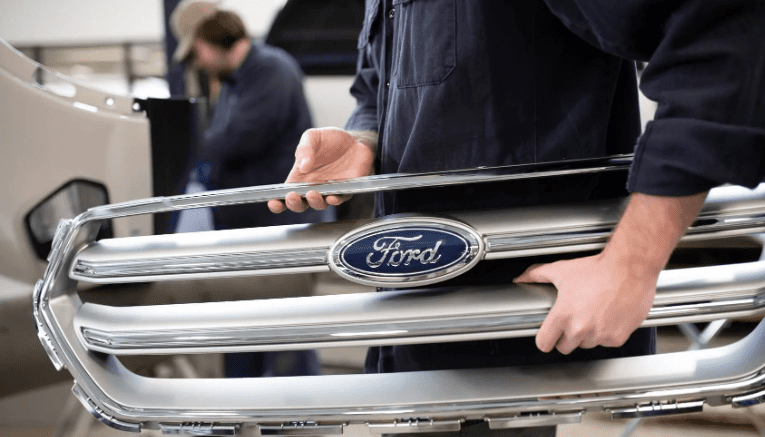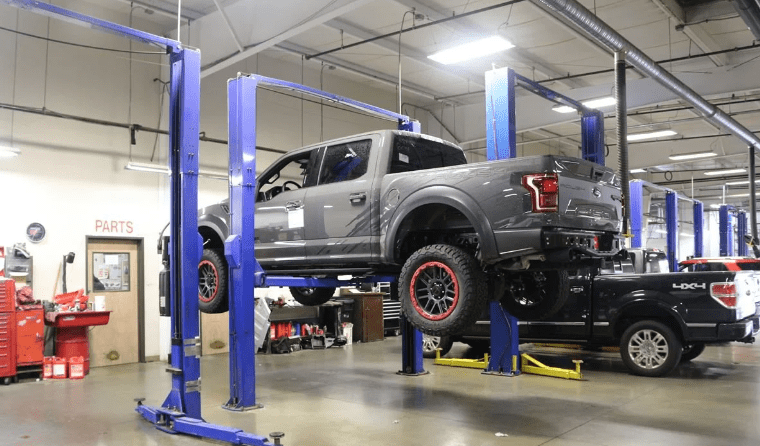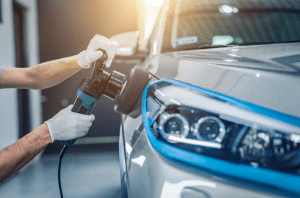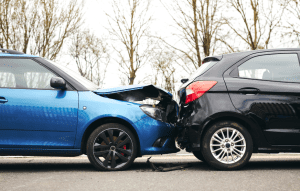In the fast-paced world of automobiles, collisions are an unfortunate reality. For Ford vehicle owners, ensuring proper collision repair is not just about aesthetics; it’s a crucial aspect of maintaining safety and performance. Let’s delve into the intricacies of Ford collision repair, exploring common damages, repair processes, and the importance of professional expertise.
Common Types of Ford Collision Damage for
Owning a Ford is a source of pride for many drivers, but even the sturdiest vehicles aren’t immune to the occasional bump or scrape. Whether it’s a fender bender in a crowded parking lot or a more serious collision on the highway, understanding the common types of Ford collision damage can help you prepare for the unexpected and make informed decisions when it happens.
1- Front-End Collisions:
These are the most frequent type of collision for Fords, primarily due to their prominent grilles and hoods. The impact typically affects the following:
- Bumpers: The first line of defense, taking the brunt of the blow and often needing replacement.
- Headlights and taillights: Cracking or shattering is common, potentially impacting visibility and safety features.
- Hood: Dents, creases, and even buckling can occur, depending on the severity of the impact.
- Radiator and engine components: In more serious collisions, internal damage can affect engine cooling and performance.
2- Rear-End Collisions:
While seemingly less impactful, rear-end collisions can cause significant damage, especially to older Ford models. Common areas of concern include:
- Trunk lid: Denting, misalignment, and latch malfunctioning are common.
- Bumper: Similar to front-end collisions, the bumper absorbs the impact and often needs replacement.
- Taillights: Damage is frequent, affecting visibility and potentially triggering safety system warnings.
- Frame and suspension: In severe cases, the impact can transfer to the chassis, compromising alignment and handling.
3- Side-Impact Collisions:
These can be particularly dangerous due to the vulnerability of passengers and the potential for rollovers. The extent of damage will depend on the angle and force of the impact, but commonly affected areas include:
- Doors: Denting, warping, and even detachment can occur, impacting access and safety.
- Fender panels: Crushing, tearing, and paint scrapes are common, requiring panel replacement or extensive repair.
- Windows: Shattering or spider cracks are potential hazards, necessitating immediate replacement.
- Structural components: Depending on the impact, the B-pillar and other structural elements might sustain damage affecting the vehicle’s integrity.
4- Other Potential Damage:
Beyond the immediate impact zone, collisions can cause hidden damage that might not be readily apparent. Be mindful of:
- Airbag deployment: Even minor collisions can trigger airbag deployment, necessitating replacement and potential interior repairs.
- Fluid leaks: Engine coolant, transmission fluid, or brake fluid leaks can indicate internal damage requiring immediate attention.
- Alignment issues: Steering wheel pulling, uneven tire wear, and drifting can indicate misalignment caused by the impact.
- Electrical and sensor malfunctions: Damaged wiring or sensors can affect various vehicle systems, including safety features and entertainment systems.
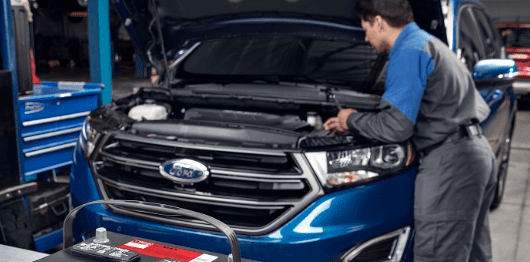
Choosing the Right Collision Repair Center
Selecting the right collision repair center is paramount for Ford owners. Opting for a certified and experienced repair center ensures that technicians are well-versed in the specific needs of Ford vehicles. Factors such as certification, expertise, and customer reviews play a crucial role in making an informed decision.
The Ford Collision Repair Process
The Ford collision repair process involves a series of meticulous steps. From initial assessment and diagnostics to the actual repair work, every stage is crucial for restoring the vehicle to its pre-collision condition. The use of genuine Ford parts is emphasized to maintain the integrity of the vehicle.
Advanced Technologies in Ford Collision Repair
Modern Ford vehicles incorporate advanced technologies, and so does their collision repair process. From computer-aided diagnostics to precision tools, technology plays a significant role in enhancing the accuracy and efficiency of the repair process.
DIY Tips for Minor Ford Collision Repairs
While professional expertise is crucial, there are instances where Ford owners can handle minor collision repairs themselves. This section provides practical tips for DIY repairs, along with safety precautions and the importance of knowing the limitations.
Cost Considerations in Ford Collision Repair
Owning a Ford comes with the joy of cruising the open road, but unfortunately, accidents happen. When your trusty Ford encounters a fender bender or worse, understanding the potential costs of repair is crucial. While the exact price tag will vary greatly depending on the specific damage, knowing the key factors influencing the bill can help you prepare and make informed decisions.
Main Cost Drivers:
- The severity of Damage: A minor scratch on the bumper will cost less to fix than a crumpled hood and damaged engine components. The extent of repairs needed directly impacts the labor and material expenses.
- Vehicle Model and Year: Newer and luxury models typically use more expensive parts and require specialized repair techniques, driving up the cost compared to older or base models.
- Parts Needed: Replacing damaged parts with genuine Ford parts guarantees quality and performance but may be pricier than aftermarket options. In some cases, used parts can offer cost savings while maintaining safety standards.
- Labor Rates: Repair shop labor rates vary by location and shop type. Certified Ford shops might have higher hourly rates due to specialized training and equipment, while independent shops may offer lower rates.
- Additional Services: Depending on the damage, additional costs might include paint matching, frame straightening, ADAS calibrations for driver-assistance features, and towing if necessary.
Potential Cost Ranges:
It’s important to remember that these are just estimates, and the actual cost might differ significantly:
- Minor dents and scratches: $50 to $500
- Bumper replacements: $200 to $1,500
- Headlight replacements: $150 to $800
- Hood replacements: $500 to $2,000
- Major collision repairs: $3,000 and above
Keeping Costs Down:
While unexpected, collision repair doesn’t have to break the bank. Here are some ways to potentially minimize the cost:
- Compare estimates from different shops: Get quotes from certified Ford shops and reputable independent shops to compare prices and services offered.
- Consider aftermarket parts for non-critical components: Discuss with your mechanic if using high-quality aftermarket parts for certain elements like fenders or grilles could offer cost savings without compromising safety.
- Negotiate with the shop: Be polite and professional, but don’t be afraid to negotiate the price, especially if you’re getting multiple repairs done at once.
- Check your insurance coverage: Understand your collision coverage details and any deductibles you might need to pay.
Ford Collision Repair near me in Houston TX
Benefits of Professional Ford Collision Repair
Professional collision repair goes beyond immediate fixes. It ensures the safety and longevity of the vehicle, backed by warranties and guarantees offered by certified repair centers. This section highlights the long-term benefits of opting for professional expertise.
Future Trends in Ford Collision Repair
The automotive industry is ever-evolving, and so is collision repair. This section explores emerging technologies and trends that are shaping the future of Ford collision repair, offering a glimpse into what owners can expect in the coming years.
Conclusion
In conclusion, prioritizing professional Ford collision repair is not just about fixing visible damages. It’s a commitment to safety, performance, and the longevity of your vehicle. Whether it’s choosing the right repair center, staying informed about preventive measures, or embracing future trends, investing in the well-being of your Ford is an investment in your driving experience.
Is DIY collision repair advisable for Ford vehicles?
While DIY collision repair might be suitable for minor issues like scratches, it’s generally advisable to seek professional assistance for Ford vehicles. Ford cars are equipped with advanced technologies and intricate systems that require specialized knowledge.
Professional technicians are trained to handle the complexities of collision repairs, ensuring safety, accuracy, and adherence to manufacturer standards.
Attempting major repairs without the right expertise can lead to further damage and compromise vehicle performance. For optimal results and to maintain the integrity of your Ford, it’s recommended to trust qualified professionals for collision repair.
Are genuine Ford parts essential for collision repair?
What factors influence the cost of Ford collision repair?
Several factors influence the cost of Ford collision repair. The extent of damage plays a significant role, with minor scratches costing less than major structural issues. Additionally, the type of damage, choice of replacement parts, labor costs, and any additional repairs or alignments needed contribute to the overall expenses.
The use of genuine Ford parts can also impact costs, ensuring quality but potentially raising the price. To manage costs effectively, obtaining multiple quotes, reviewing insurance coverage, and choosing certified repair centers are essential considerations.


